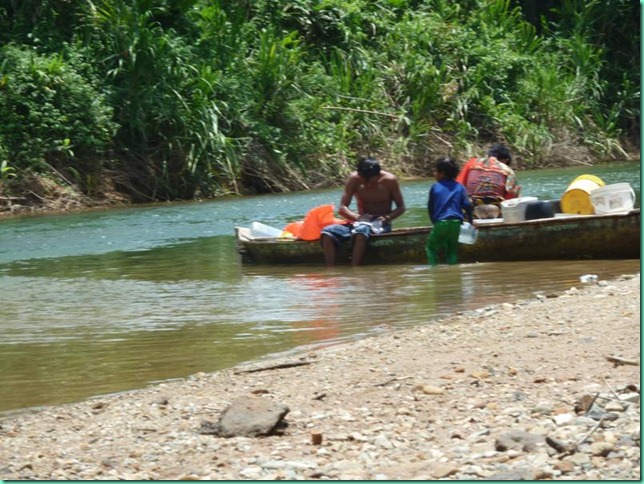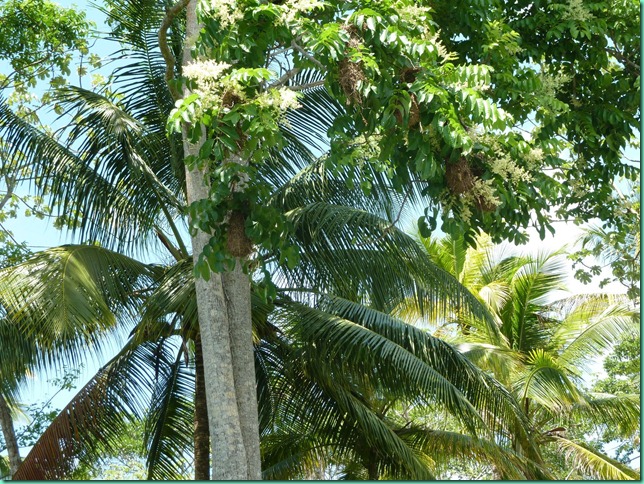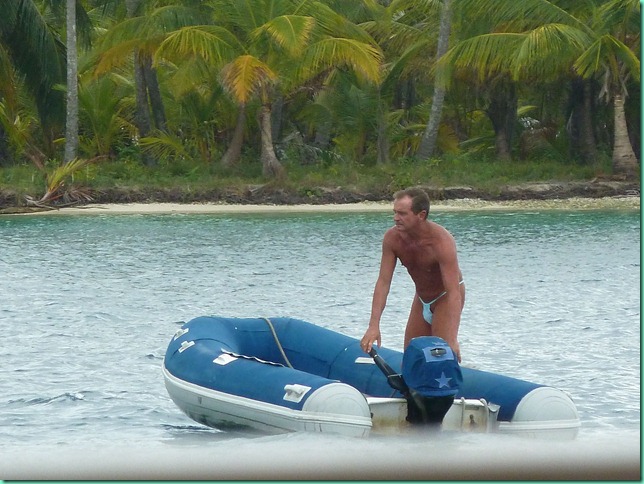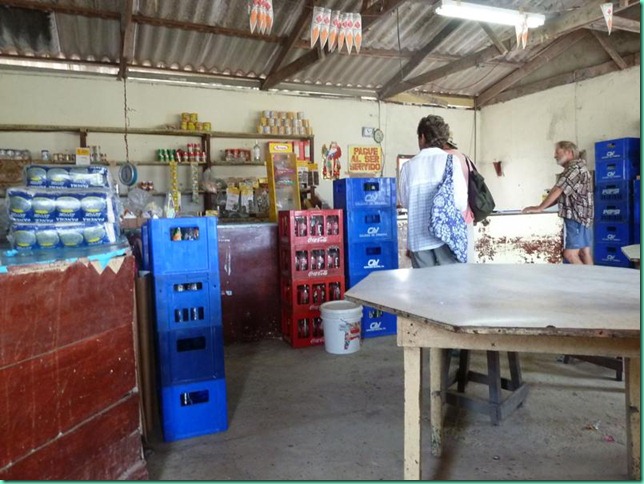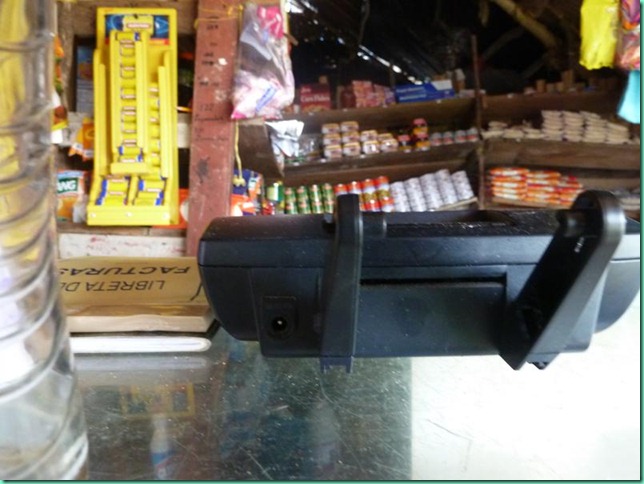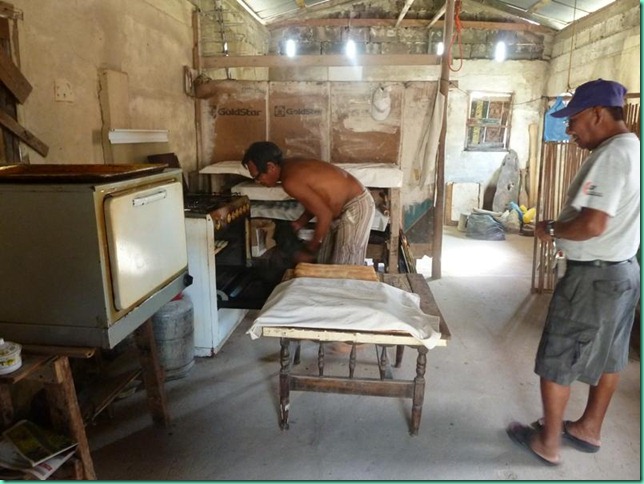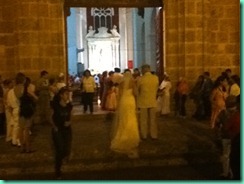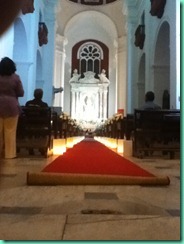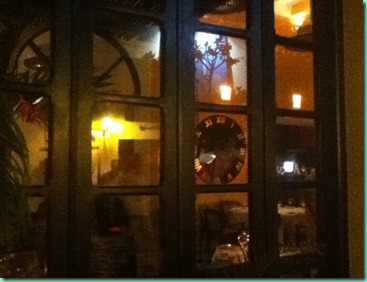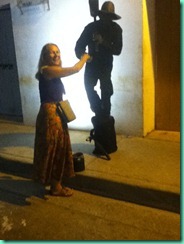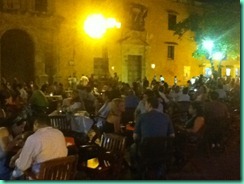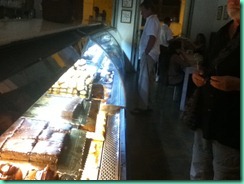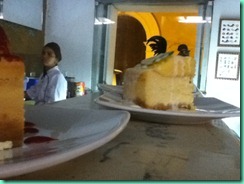A couple weeks later, we had sweated, spotted and stank (or should that be stunk?) up all our clothes, towels and sheets again. The household deities offered clouds and sometimes lightening, but no precipitation. So we decided it was time for a river trip. The pipe that supplies the town, at Nargana, at the Rio Diablo, has apparently been broken for some time, so it was easy to follow the trail of ulus full of bottles, jugs and drums into the mouth of the river, between numerous tree trunks and snags, over the 14-18”bar, in to a pleasant lazy river full of fresh water.
So far we’ve seen mostly the islands of the San Blas, their sandy beaches, groves of coconut, or mangrove, their off-lying shoal and reefs, breaking waves etc. This was our first real experience in the mainland. Although we knew that much of the foreshore was cultivated we’d never seen any sign of the activity from the distance, other than what produce people bring us in their ulus, and sometimes, smoke. There were no signs of clear-cutting or slash and burn, or machinery, no chemicals, no fertilizer bags or any other sign of destructive practice.
We went up maybe a mile or two, and it all looked pretty much like this
Every so often there would be a ulu pulled into the driveway of a finca.
It was really impressive how much agriculture was taking place mixed in with the natural habitat. Our friend Arquin who we met back in the eastern San Blas, told us that he had several ‘fincas’ for his various crops. One day he’d go for yucca, one day to another place for bananas. So, here, it would be coconuts, bananas, mango, maybe papaya, and a plant I remember as dalo from the Pacific, but haven’t seen in the markets here – not ready yet? And plenty I don’t recognize.
Finally it started to get too snagged, barred and shallowed, so we stopped on a stony shoal and waited to see what would happen next.
An ulu came along. We asked if this were a good place for washing. Here yes, there no, he told us. Beyond this point, he said, the river was for drinking water, and there was a ‘molto’ fine for washing there. Then he offered us some mangoes. Thanks to the secret rule “when you leave the boat, always take shoes, always take money”, we were able to accept with pleasure, and one Balboa!
Soon we were in a regular laundromat.
The little boy was very happy to yell ‘hola’ at us every once a while, but not so happy as I was to see him giggle as we ‘hola’-ed back.
We also met two sets of people who were collecting mud from the river bank near here. Those Spanish lessons may be paying off: we think this mud is a special curative for pain in the knee joint. You slather it on before you got to bed at night, wrap it in a cloth, and in the morning your aches will be diminished. Would that we were able to distinguish the good mud from the other mud, as the two gents could do! The only word they could think of to describe this particular mud was ‘suave’, soft.
Doug was assigned agitation duty but sometimes got distracted by the passing scene.
Fresh water! Flowing for minutes through my towels and sheets – what a treat! Then we soaked ourselves neck-deep for about half an hour, bird song abounding and bird flashes of color throughout the canopy for extra entertainment. Note to self, next time bring binoculars.
We had puttered slowly upstream via outboard, but decided to paddle downstream. An ulu with an outboard inquired if we had run out of gas. No, I said, ‘esta es mas tranquilo’ was an answer they appreciated.
Actually we’d hoped to drift, but there was enough headwind to stall the inflatable. We stayed right behind and at an equal pace 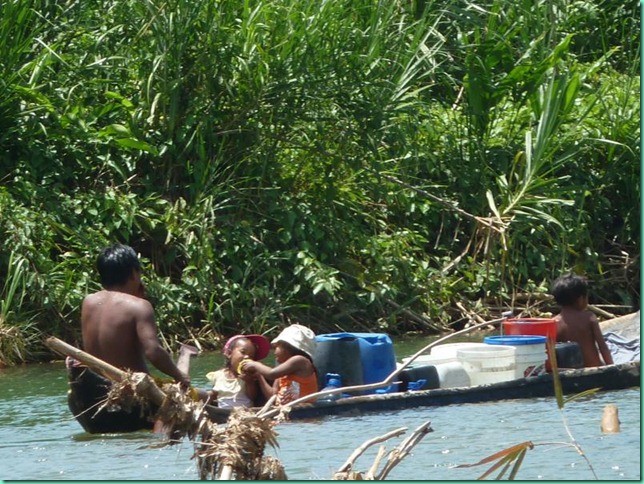
with this ulu, dad and the kids chattering away, until we took a little detour to look at a few things, like these pendulous bird nests under the flowers, birds there too with bright yellow rumps, but not for this photo.
And there were several family burial spots too; no others as elaborate as this one (many houses aren’t this well equipped), but the principle is the same, a roof, a chair or hammock and a collection of other goods th
at might be useful to the deceased as s/he makes their way in the next worlds – we’ve seen coffee mugs and cookware, baskets or crates, etc . This one looks like there’s a little Catholic mixed in.
Then of course we/I had to hang all this stuff to flap dry in the boat’s rigging – ran out of clothespins – fold and store it and remake the beds. All that was a very small price to pay for a most pleasant day in Kuna Yala.


